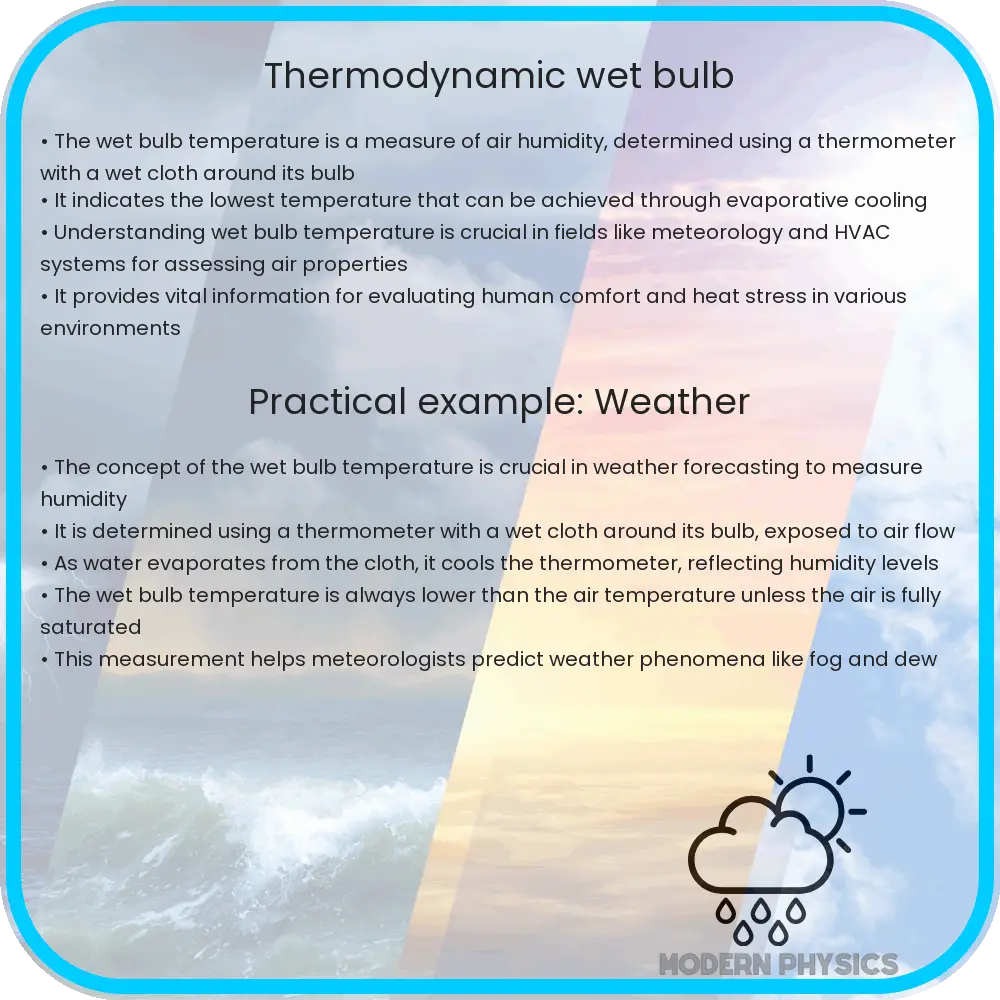Explore thermodynamic wet bulb temperature: its measurement, efficiency in cooling systems, and environmental impact in our comprehensive guide.

Understanding Thermodynamic Wet Bulb Temperature
The concept of thermodynamic wet bulb temperature plays a critical role in various scientific and engineering applications, particularly in the realms of meteorology, HVAC (heating, ventilation, and air conditioning), and industrial processes. This temperature is a measure of the lowest temperature that can be achieved through evaporative cooling under current atmospheric conditions. Understanding its principles is essential for enhancing efficiency and effectiveness in these areas.
Efficiency Implications in Various Systems
The efficiency of cooling systems, such as air conditioners and evaporative coolers, is profoundly influenced by the thermodynamic wet bulb temperature. This temperature provides a baseline for the lowest possible temperature these systems can achieve in a given environment. Knowing this limit allows engineers and technicians to optimize the design and operation of cooling systems for maximum efficiency.
Measuring Thermodynamic Wet Bulb Temperature
Measuring the thermodynamic wet bulb temperature involves using a device known as a wet bulb thermometer. This device consists of a thermometer with its bulb wrapped in a water-soaked cloth. Air is passed over the cloth, causing water to evaporate, which cools the bulb. The temperature reading at equilibrium – when the rate of water evaporation equals the rate of heat absorption – is the wet bulb temperature. This measurement is pivotal in assessing the humidity of the air and the potential for evaporative cooling.
Analysis and Applications in Various Fields
In meteorology, the thermodynamic wet bulb temperature is vital for predicting weather patterns and understanding humidity levels. In HVAC systems, it informs the design and operation of air conditioning units, particularly in terms of humidity control and energy efficiency. Industrial applications include its use in cooling towers and other systems where evaporative cooling is a key component.
An accurate analysis of this temperature helps in optimizing processes, reducing energy consumption, and improving overall system performance. Advanced computational tools and models are now being developed to predict the thermodynamic wet bulb temperature under various atmospheric conditions, further enhancing its application in real-world scenarios.
Advanced Techniques for Thermodynamic Wet Bulb Temperature Analysis
Recent advancements in technology have enabled more precise measurement and analysis of the thermodynamic wet bulb temperature. Digital sensors and automated systems are increasingly used for real-time monitoring, providing more accurate and consistent data. Computational fluid dynamics (CFD) and other simulation tools also play a crucial role in predicting and analyzing the impact of various environmental conditions on this temperature.
Energy Efficiency and Environmental Impact
Understanding and utilizing the thermodynamic wet bulb temperature can significantly improve energy efficiency in cooling systems. By optimizing these systems based on this parameter, it is possible to reduce energy consumption and, consequently, lower greenhouse gas emissions. This is particularly important in the context of global efforts to combat climate change and promote sustainable practices in industries.
Challenges and Future Perspectives
Despite the advancements, there are challenges in accurately measuring and utilizing the thermodynamic wet bulb temperature, especially in extreme and rapidly changing environmental conditions. Future research is focused on enhancing the resilience and adaptability of measurement and analysis techniques in these scenarios. Additionally, there is a growing interest in integrating renewable energy sources with cooling systems to further boost their environmental friendliness and sustainability.
Conclusion
The thermodynamic wet bulb temperature is a fundamental concept with wide-ranging applications in meteorology, HVAC, and industrial processes. Its accurate measurement and analysis are crucial for optimizing the efficiency and environmental impact of cooling systems. With ongoing technological advancements and a growing focus on sustainability, the importance of understanding and utilizing this temperature parameter will only increase in the future. By continuing to improve measurement techniques and integrating these insights into system designs, it’s possible to achieve significant energy savings and contribute to a more sustainable world.
